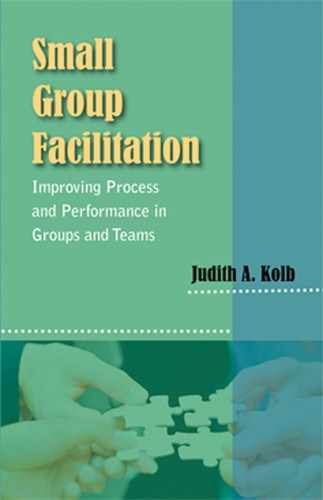0%
158Chapters
0-1Hours read
0kTotal Words
Book Description
Small Group Facilitation presents a new, research-based framework for facilitation along with plenty of how-to's tools for putting into action. Unlike other resources, it focuses on the importance of group process. If you're a veteran facilitator, you'll gain tools for perfecting your craft. If you're a beginner, you'll gain a clear roadmap to success.
Table of Contents
- Title
- Copyright
- Contents
- Preface
- Acknowledgments
- Part One: Overview
- Part Two: Framework for Facilitation
- Part Three: Techniques for Decision Making, Problem Solving, and Strategic Planning
- Appendices
- About the Author
- Index
